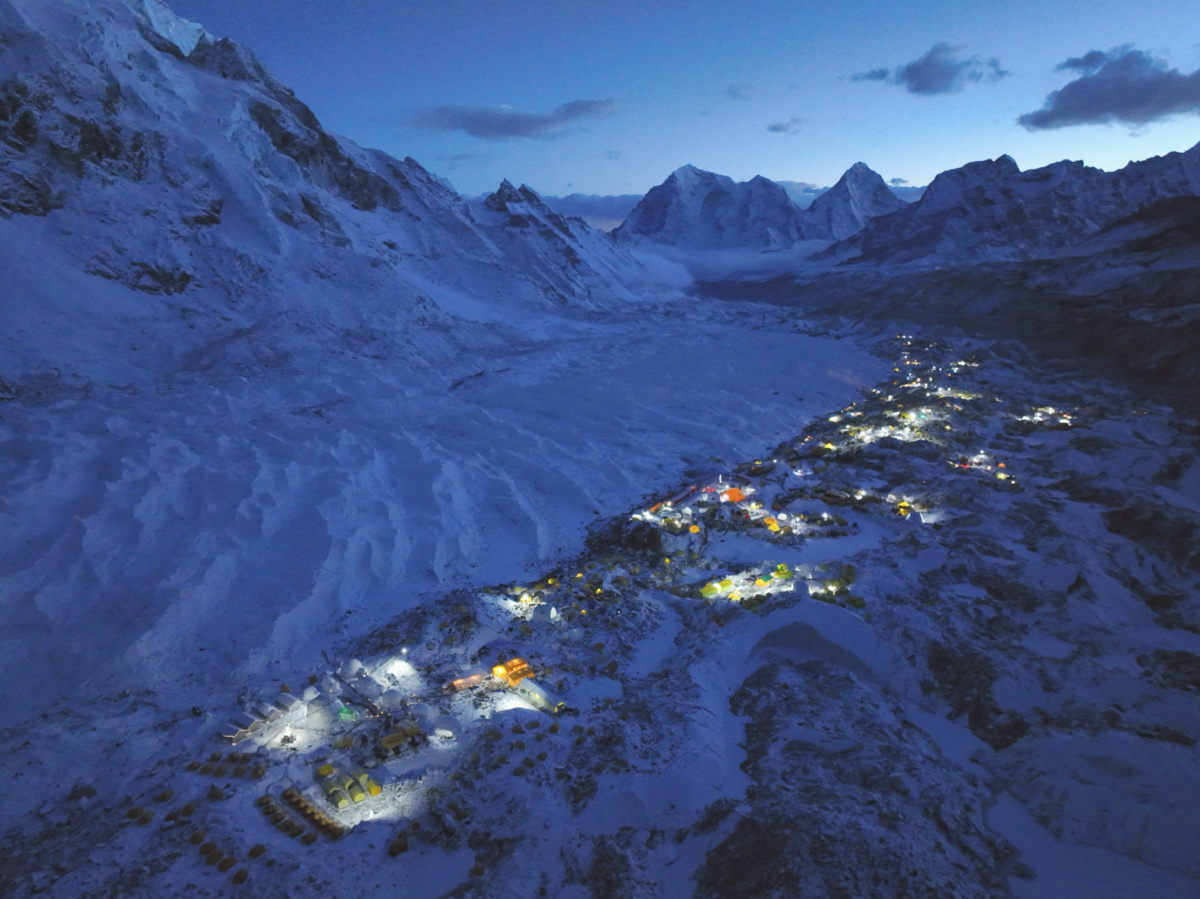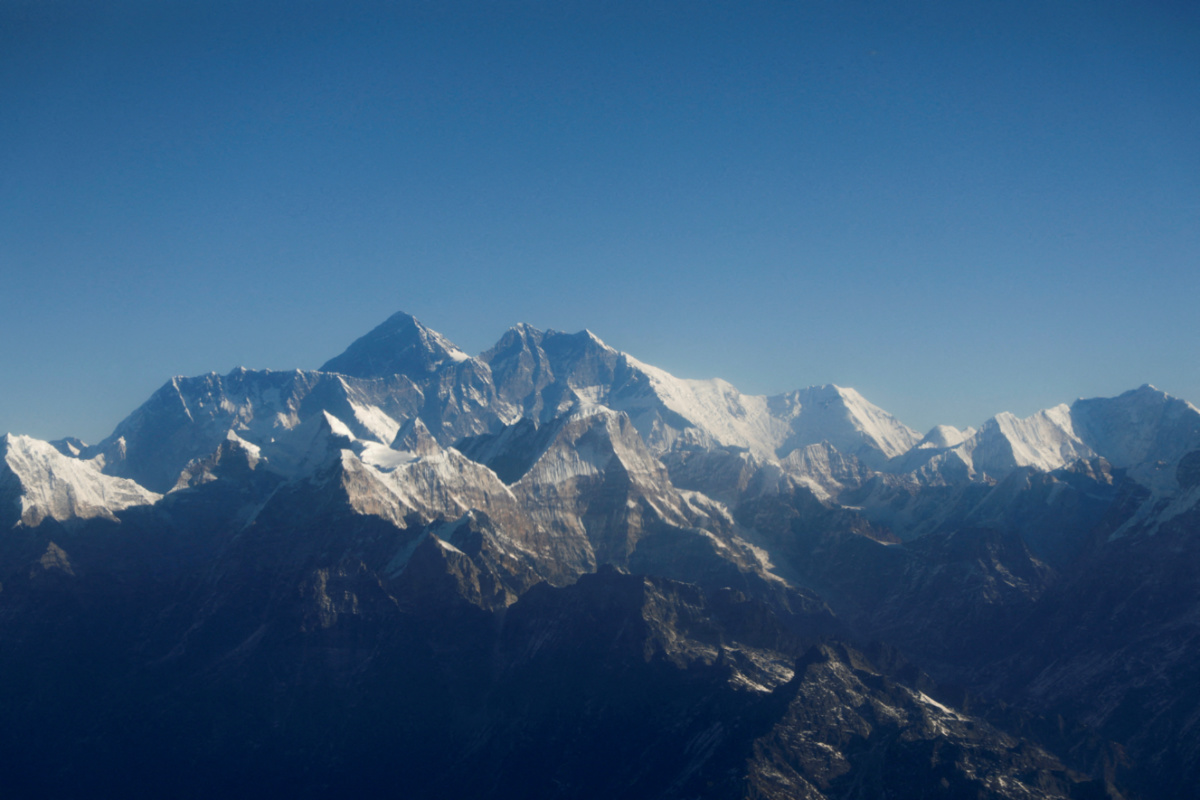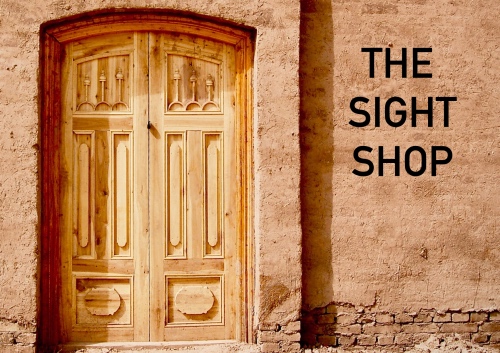Kathmandu, Nepal
Reuters
A record number of mountaineers expected on Mount Everest during the current spring climbing season has sparked fears of a traffic jam when teams make their final ascent through the “death zone” to the summit of the world’s tallest peak.
Overcrowding and high numbers of relatively inexperienced climbers were cited as key factors when nine people died high up on the 8,849 metres peak in May, 2019 – during one of the deadliest seasons for years.

A general view of the Everest base camp taken from a drone, in Nepal, on 24th April, 2023. PICTURE: Reuters/Pasang Rinzee Sherpa
Anyone wanting to climb Everest by the end of May, when the weather is usually still favourable, should have obtained a Nepal government permit by the end this month.
So far, Nepal has handed out a record 463 permits to climb Everest between March and May, beating 2021’s 409.
“The challenges with more climbers on the mountain will be potential traffic jams on the climbing route, especially if the weather windows are few and far between,” Garrett Madison of US based Madison Mountaineering company said in a WhatsApp message from the base camp.
“This can lead to climbers running out of oxygen and facing exhaustion/exposure in the ‘death zone’,” he added, referring to altitude above 8,000 metres where the air is too thin to survive for long without supplementary oxygen.
The greatest risk of delays occur at the Hillary Step, a steep 12 metre rock face, just 180 metres below the summit, putting it high in the ‘death zone’.
Home to eight of the world’s 14 highest peaks, Nepal is often criticised by some Western climbers for allowing anyone who can pay the $US11,000 fee for a permit to climb Everest – a charge the government denies.
“Many of the companies now guiding on the south side of Everest are taking climbers who have not yet developed the experience necessary to safely navigate the difficulties,” said Adrian Ballinger of US-based Alpenglow Expeditions, who has moved his activities to the Chinese side.
This year, Chinese nationals have received the most permits, with 96, and US climbers have received the second most with 87, while climbers from India got 40.
A second climbing season runs from September to November but is not as popular.
For every climber there is typically at least one local sherpa.

Mount Everest, the world highest peak, and other peaks of the Himalayan range are seen through an aircraft window during a mountain flight from Kathmandu, Nepal, on 15th January, 2020. PICTURE: Reuters/Monika Deupala//File photo
Climbing is a key earner for the poor country, where about 500,000 people are employed in tourism, including climbing, and the number of permits has been rising steadily.
So far this year, Nepal has granted permits to 1,046 climbers for 24 peaks, earning the government $US5.6 million, of which $US5 million came from Everest alone.
Each climber spends at least $US26,700 on an expedition in Nepal, including on permit fees, gas, food, guides and local travel, said Ang Tshering Sherpa of Nepali expedition organising company Asian Trekking.
We rely on our readers to fund Sight's work - become a financial supporter today!
For more information, head to our Subscriber's page.
Yubaraj Khatiwada, director at Nepal’s Department of Tourism, rebuffed criticism of the number of permits awarded, and he said a team of doctors and government officials would be stationed at the Everest base camp for the first time to manage climbing activities throughout the season.
“We are concerned for their safety and are well prepared to cope with the crowd, by spreading summit bids as long as the good weather window provides to ensure the climbing goes smoothly as far as possible,” Khatiwada said.
He said the government was considering introducing a requirement for climbers to scale at least one 6,000-metre peak in Nepal before attempting Everest.
Lukas Furtenbach of Austria-based Furtenbach Adventures said the higher number of climbers was not a problem so long as they are managed well and the weather holds long enough to have more days to spread out teams’ attempts on the summit.
“I can only see a risk if people are running out of oxygen. So proper oxygen logistics are crucial,” Furtenbach said.





